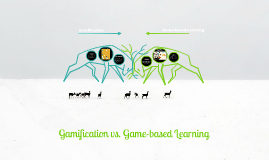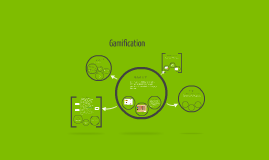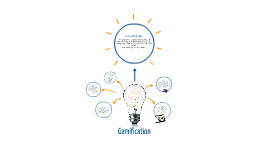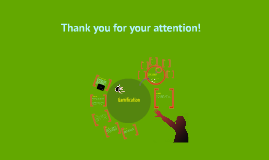Gamification
Transcript: Games are more fun when you have someone to play with "The next time I visit the bakery, I get another stamp. When I have 10 stamps, I get free bread." Samsung Nation Linked in accomplished this by unvealing the signup progress bar which uses ______ principle to motivate people to _______ What is it? The trick is in identifying the behavior you want to encourage based on your business objectives. Gamification Example: Loss Aversion Points Levels Awards Achievements Leaderboards Notification Badges Titles Etc. It's all about behaviors. Provide a way to track success Enterprise Examples "Don't make it a requirement, not everyone wants to collect badges" Example: Gameification isn't about making a game, it's about reusing principles from a very successfully engaging field "In just the next couple of years, Gartner expects gamification to drive about half of all business innovation." Promote social sharing, social proof, social feedback, and social status. refers to people's tendency to strongly prefer avoiding losses to acquiring gains. Create goals, and sub goals. Provide skillful but attainable challenges. Give lots of feedback. Motivate and encourage them to reach their goals. Congratulate them when they accomplish a goal. Leave the user with a sense of success. Integrating The Behavior Platform’s smart gamification elements with SharePoint functionality, companies can measure, influence and reward key user behaviors inside SharePoint that improve knowledge sharing, document management and social collaboration. Example: It's about balance refers to people's tendency to strongly prefer avoiding losses to acquiring gains. How do you get started? 84% of companies report increased adoption after implementing. Improve Sign-up completeness Gamification: Adding mechanics from game theory to the user experience to motivate and engage the user. Encourage the Behavior It doesn't have to be complicated to be effective: “To prevent losing points, you’ve got to log in once every 30 days,” Examples DODOcase Customize electronic cases "Nitro for Salesforce is a turn-key gamification solution that puts game mechanics inside the Sales Cloud and Service Cloud console. Pre-built components and proven program designs challenge employees to learn and use Salesforce every time they open the application." Online loyalty program that offers virtual rewards to consumers who talk up Samsung, the electronics giant. Yes, and No. It's about reusing pieces. Achievements, Appointments, Authority, Behavioral Momentum, Blissful Productivity, Bonuses, Cascading Information Theory, Challenges, Combos, Collections, Community Collaboration, Competition, Countdown, Discovery, Empathy, Epic Meaning, Framing, Free Lunch, Infinite Gameplay, Levels, Loss Aversion, Lottery, Ownership, Personality, Playfulness, Points, Progression, Quests, Reciprocity, Reward, Scarcity, Schedules, Scores, Social Proof, Status, Targets, Unpredictable Reinforcement, Urgent Optimism, Virality Identify the Behavior According to a Pew Research Center report, gamification is "interactive online design that plays on people's competitive instincts and often incorporates the use of rewards to drive action -- these include virtual rewards such as points, payments, badges, discounts and free gifts; and status indicators such as friend counts, re-tweets, leaderboards, achievement data, progress bars and the ability to level up." “To prevent losing points, you’ve got to log in once every 30 days,” Gamification is about enhancing the experience Game Mechanics Increased Sign-Ups The content has to be good to begin with, then game mechanics can be lightly layered on top to make the experience more fun. Nitro for Salesforce Duolingo.com Language Learning "Gamification" Badgeville for SharePoint Recap Are we supposed to use all of this? Explanation

















